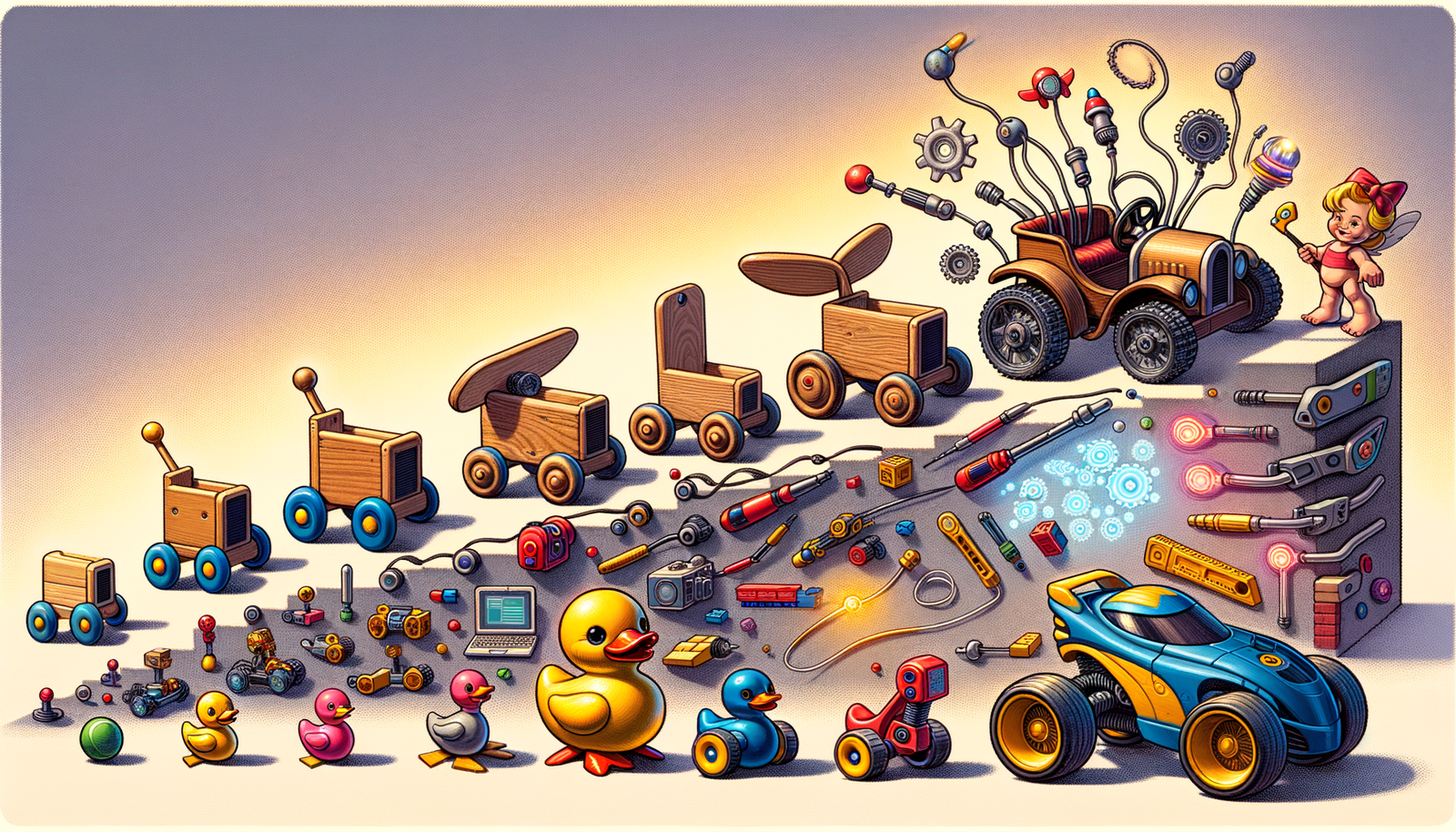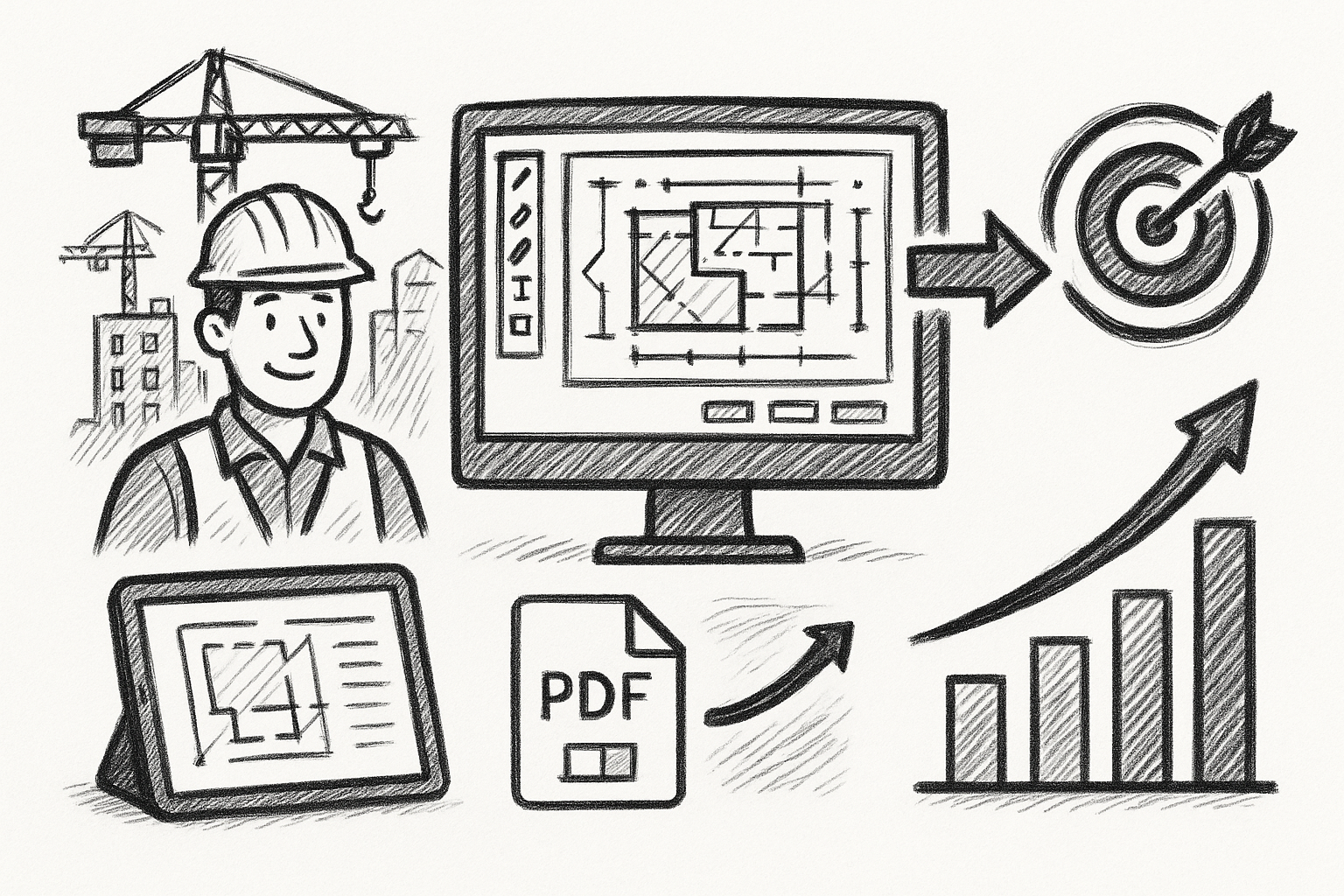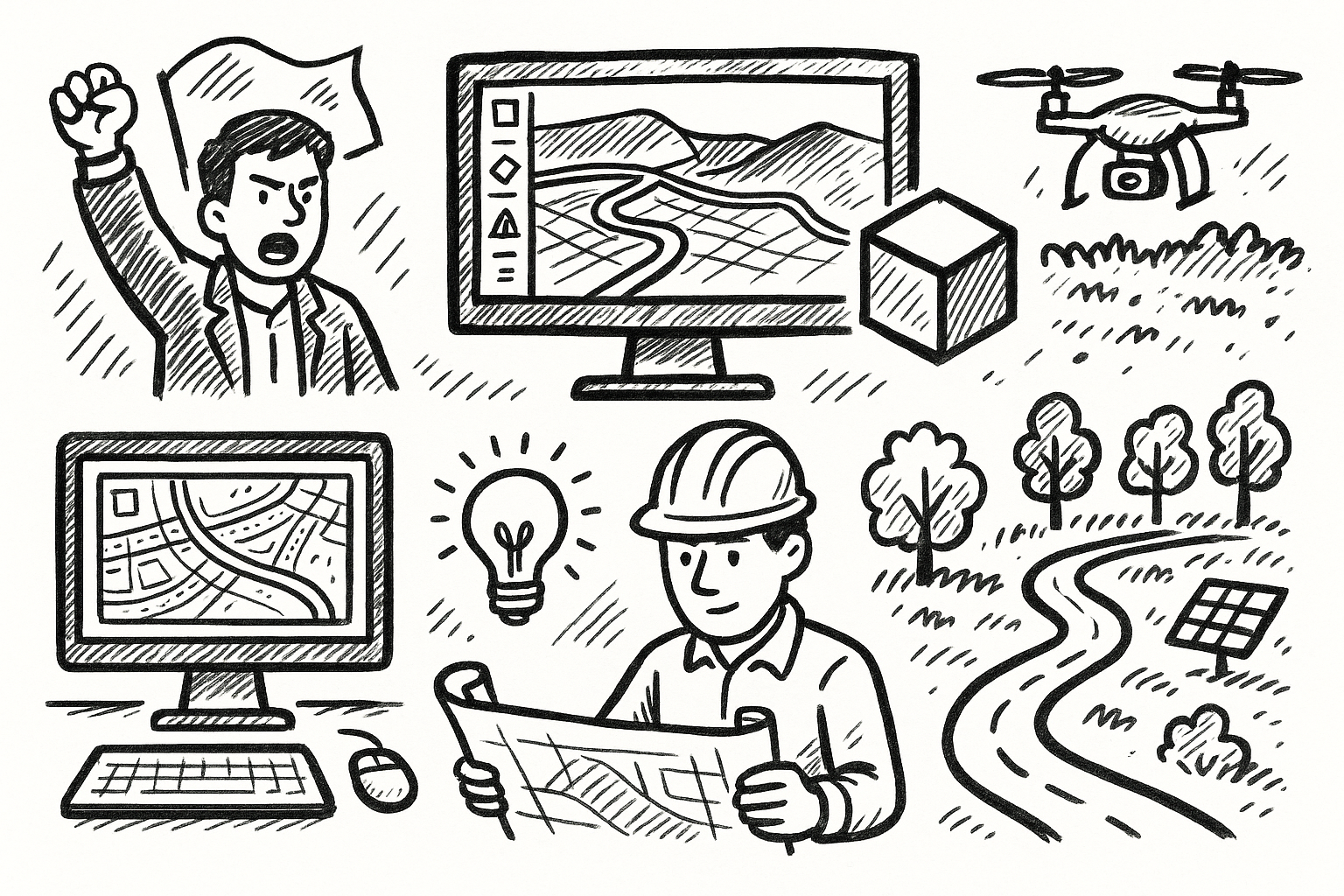Your Cart is Empty
Customer Testimonials
-
"Great customer service. The folks at Novedge were super helpful in navigating a somewhat complicated order including software upgrades and serial numbers in various stages of inactivity. They were friendly and helpful throughout the process.."
Ruben Ruckmark
"Quick & very helpful. We have been using Novedge for years and are very happy with their quick service when we need to make a purchase and excellent support resolving any issues."
Will Woodson
"Scott is the best. He reminds me about subscriptions dates, guides me in the correct direction for updates. He always responds promptly to me. He is literally the reason I continue to work with Novedge and will do so in the future."
Edward Mchugh
"Calvin Lok is “the man”. After my purchase of Sketchup 2021, he called me and provided step-by-step instructions to ease me through difficulties I was having with the setup of my new software."
Mike Borzage
Design Software History: Transforming Toy Design: The Evolution of Design Software and Its Impact on Innovation in the Toy Industry
January 04, 2025 7 min read


Introduction to Design Software in the Toy Industry
The toy industry has undergone a remarkable transformation over the decades, largely propelled by the advent and evolution of design software. From the simplistic handcrafted toys of yesteryears to today's complex and interactive playthings, the integration of digital tools has revolutionized the way toys are conceptualized, designed, and brought to market. Before the adoption of digital tools, traditional toy design processes were labor-intensive and time-consuming, relying heavily on hand-drawn sketches, clay models, and physical prototypes. These methods, while artistically rich, posed significant limitations in terms of precision, scalability, and iteration speed. Designers often faced challenges when modifications were required, necessitating the recreation of entire prototypes to accommodate changes, which impeded the pace of innovation.
The necessity to innovate and keep pace with changing consumer preferences highlighted the importance of adopting more efficient design methodologies. The introduction of design software into the toy industry marked a pivotal shift, enabling a more dynamic and flexible approach to toy development. With software facilitating these aspects, the industry has been able to embrace higher levels of innovation and creativity, empowering designers to push the boundaries of what's possible and bring imaginative concepts to life with unprecedented accuracy and efficiency. Digital tools have opened up new horizons for experimentation, allowing for rapid prototyping, virtual testing, and seamless collaboration among design teams. As a result, the toy industry has seen an influx of innovative products that not only entertain but also educate and engage consumers in more meaningful ways.
Furthermore, design software has played a crucial role in enhancing the safety and compliance of toys. By utilizing advanced simulation and analysis tools, designers can identify potential issues early in the development process, ensuring that the final products meet rigorous safety standards. This integration of technology has not only streamlined the design process but has also contributed to producing higher-quality toys that resonate with modern audiences. Overall, the adoption of design software signifies a significant advancement in the toy industry, bridging the gap between traditional craftsmanship and modern technological capabilities.
Early Beginnings and Milestones
The early adoption of computer-aided design (CAD) in toy manufacturing marked a watershed moment in the industry's evolution. As computers became more accessible and software capabilities expanded in the late 20th century, pioneering companies began exploring how digital tools could enhance their design processes. Notably, industry giants such as LEGO and Hasbro were among the first to integrate CAD into their workflows. LEGO, with its intricate brick systems, found that CAD software allowed designers to create more complex and precise models, facilitating the development of new sets and components that would have been challenging to conceptualize using traditional methods. Hasbro similarly embraced digital tools to streamline the design of their diverse toy lines, ranging from action figures to board games.
Individuals such as Kjeld Kirk Kristiansen of LEGO and Alan Hassenfeld of Hasbro played significant roles in championing the integration of technology within their companies. Their vision underscored the potential of CAD to revolutionize toy design by enhancing precision, reducing development time, and fostering greater innovation. These leaders recognized that embracing digital transformation was essential to maintaining competitiveness in a rapidly evolving market.
Key technological advancements during this period included the transition from hand-drawn sketches and physical prototypes to 3D modeling. This shift allowed designers to visualize products in a virtual environment, making it easier to identify and rectify design flaws before physical prototypes were produced. However, the initial adoption of CAD was not without its challenges. Early software was often complex and not specifically tailored to the needs of toy designers, requiring significant training and adaptation.
To address these challenges, there was a concerted effort to develop more intuitive modeling interfaces tailored for toy design. Software developers began collaborating with toy companies to create tools that combined the precision of engineering software with the creative flexibility needed for toy design. This collaboration led to the development of specialized plugins and standalone applications that made it easier for designers to adopt CAD tools effectively. These milestones set the foundation for the widespread use of digital tools in the industry, paving the way for more sophisticated technologies that would emerge in the following decades.
Impact of Geometric and Solid Modeling
The introduction of geometric modeling significantly enhanced design precision and expanded the capabilities of toy designers. Techniques such as NURBS (Non-Uniform Rational B-Splines) and polygonal modeling allowed for the creation of complex, smooth surfaces and intricate details that were previously difficult to achieve. NURBS modeling, in particular, enabled designers to craft organic shapes with mathematical precision, which was essential for developing toys with ergonomic features or aesthetically pleasing contours.
The influence of solid modeling software like Autodesk Inventor and SolidWorks cannot be overstated. These tools provided a comprehensive environment for designing, simulating, and visualizing products in three dimensions. With solid modeling, designers could create accurate representations of toy components, complete with physical properties such as weight, material, and center of gravity. This level of detail facilitated more effective prototyping and manufacturing planning.
The improvement in design iteration speed and prototype accuracy was a game-changer for the industry. Designers could quickly make adjustments to a model and immediately see the impact of those changes. This agility reduced the time and cost associated with developing physical prototypes for each iteration. Additionally, the integration of simulation tools to test toy safety and functionality became an integral part of the design process. Engineers could perform stress analysis, motion studies, and other simulations to ensure that the toys would withstand the rigors of play and meet safety regulations before any physical prototypes were produced.
These advancements also enabled better communication between design and manufacturing teams. The precise models generated through solid modeling could be directly used to program CNC machines and other automated manufacturing equipment, ensuring that the final products matched the designers' intentions. The digital models also facilitated the creation of assembly instructions and marketing materials, streamlining the entire product development lifecycle.
Moreover, the use of geometric and solid modeling opened up new possibilities for customization and personalization in toys. Designers could easily create variations of a product to cater to different markets or consumer preferences. This flexibility has led to a proliferation of toy options, enhancing consumer satisfaction and driving sales. In essence, geometric and solid modeling technologies have had a profound impact on the toy industry, elevating the quality and innovation of products while improving efficiency and collaboration across the development process.
Modern Developments and Future Prospects
The toy industry continues to evolve rapidly with the emergence of collaborative and cloud-based design platforms. These modern tools enable design teams spread across the globe to work together seamlessly in real-time. Software solutions like Autodesk Fusion 360 and Onshape provide cloud-based environments where multiple users can access, edit, and comment on design files simultaneously. This level of collaboration has significantly shortened development cycles and fostered greater innovation through collective input.
The impact of open-source platforms and community-driven innovation has also been profound. Platforms such as Blender offer free, open-source 3D modeling tools that are accessible to both professionals and hobbyists. This democratization of design software has led to a surge in user-generated content and ideas, some of which have been adopted by major toy manufacturers. The integration of feedback and ideas from a broader community contributes to the creation of toys that are more in tune with consumer desires.
Emerging technologies are set to reshape the industry further. Additive manufacturing (3D printing) has become a critical tool in prototyping and, increasingly, in the production of custom toys. Designers can now create physical models directly from their digital designs within hours, allowing for rapid testing and iteration. Some companies, like Mattel, have explored offering 3D printing services that enable consumers to customize and print their own toys, blurring the lines between manufacturer and end-user.
AI and machine learning are making inroads into design automation and consumer preference analysis. Intelligent algorithms can now assist in generating design variations, optimizing shapes for functionality and aesthetics, and even predicting market trends based on data analytics. This technology aids designers in making informed decisions, reducing guesswork, and enhancing the likelihood of a product's success in the market.
Furthermore, the advent of augmented reality (AR) and virtual reality (VR) technologies offers novel ways to visualize and interact with toy designs. Designers can use AR and VR to experience their creations in a simulated environment, assessing scale, ergonomics, and user interaction in a more immersive manner. For consumers, these technologies provide interactive toy experiences that extend beyond physical limitations, adding a digital dimension to traditional play.
To emphasize the potential implications of these advancements, consider the following points:
- Global Collaboration: Cloud-based platforms enable designers from different regions and time zones to contribute to projects, leveraging diverse perspectives and expertise.
- Customization and Personalization: Additive manufacturing and open-source tools allow for highly customized toys, catering to niche markets and individual preferences.
- Enhanced Consumer Experience: AR and VR technologies provide interactive and immersive experiences, both in the design phase and for end-users, transforming how toys are enjoyed.
Moreover, the role of data analytics is becoming increasingly significant. By analyzing consumer behavior and preferences, companies can tailor their designs to meet specific demands, improving satisfaction and loyalty. Machine learning algorithms can process vast amounts of data to identify patterns and trends that may not be immediately apparent to human analysts. Additionally, environmental considerations are influencing design practices. Software tools now include features for assessing the environmental impact of materials and production processes. This enables companies to make more sustainable choices, responding to consumer demands for eco-friendly products.
The convergence of these technologies indicates a future where the toy industry is more agile, responsive, and innovative. Companies that embrace these developments are likely to gain a competitive edge, offering products that are not only technologically advanced but also closely aligned with consumer expectations.
Conclusion
The integration of design software into the toy industry has been nothing short of transformative. It has revolutionized the way toys are designed, tested, and brought to market, enabling a level of precision and innovation that was previously unattainable. The industry's journey from hand-drawn sketches to sophisticated digital models exemplifies the profound impact of technology on creative processes. As technologies continue to evolve, the need for adaptability and innovation remains paramount. Companies must stay abreast of emerging tools and methodologies to remain competitive and meet the ever-changing demands of consumers.
Looking to the future, we can anticipate further breakthroughs that will continue to reshape the industry. Advances in AI, machine learning, and immersive technologies like AR and VR hold the potential to revolutionize not just design processes but also the consumer experience. The possibility of integrating IoT and smart technologies into toys opens up new frontiers for interactivity and personalization.
Ultimately, the enduring importance of creative software solutions in shaping engaging and safe toys for future generations cannot be overstated. As designers harness the power of advanced technologies, they are better equipped to create products that inspire, educate, and entertain. The synergy between human creativity and technological capability is set to drive the toy industry toward an exciting and innovative future, where the only limit is imagination.
Also in Design News

Maximizing Construction Efficiency: How Bluebeam Transforms PDF Workflows into Strategic Advantages
August 01, 2025 4 min read
Read More
Revolutionizing Land Development: 5 Cutting-Edge Civil 3D Capabilities for Smarter, Sustainable Workflows
August 01, 2025 5 min read
Read More
Driving Sustainable Innovation: Integrating Eco-Conscious Practices in Design Software Development
August 01, 2025 8 min read
Read MoreSubscribe
Sign up to get the latest on sales, new releases and more …


